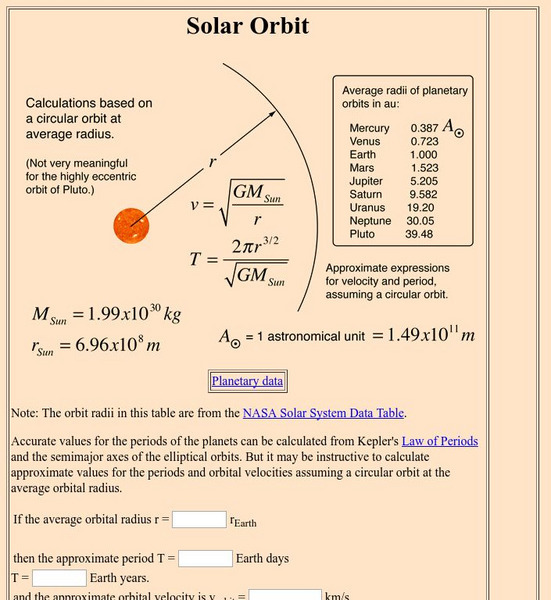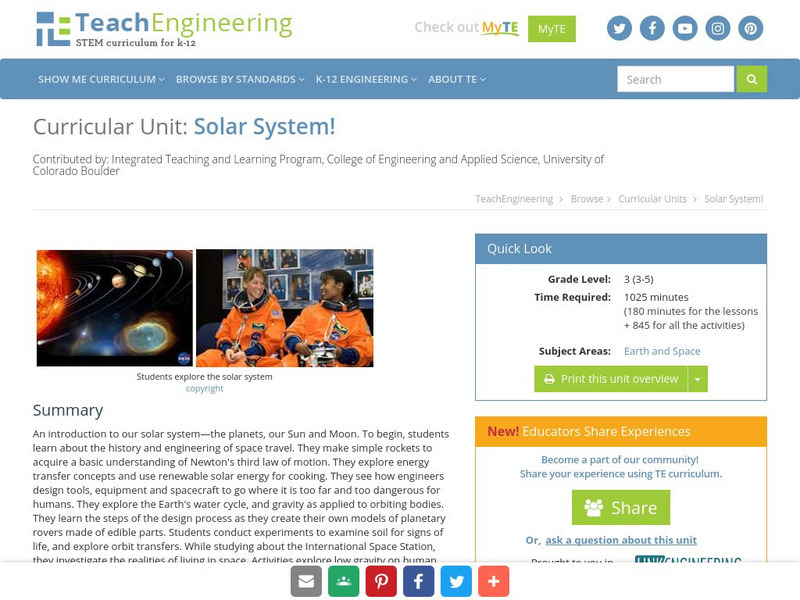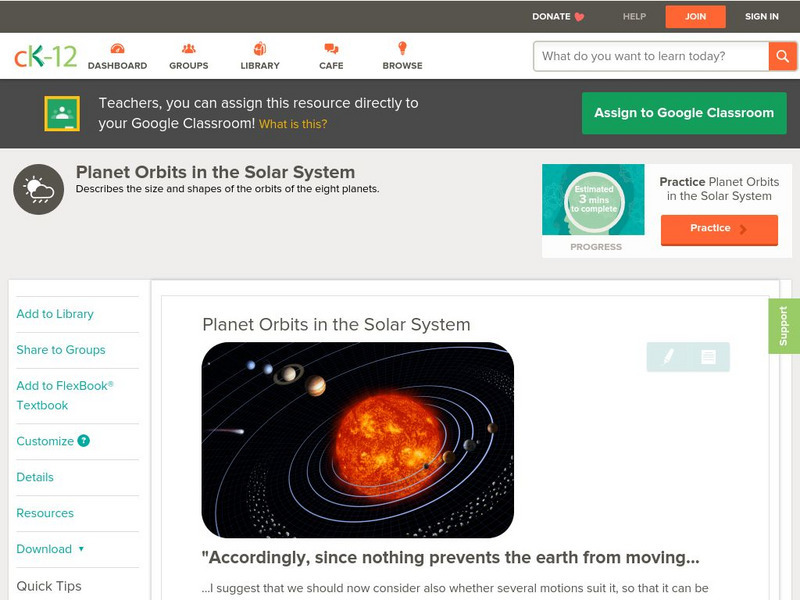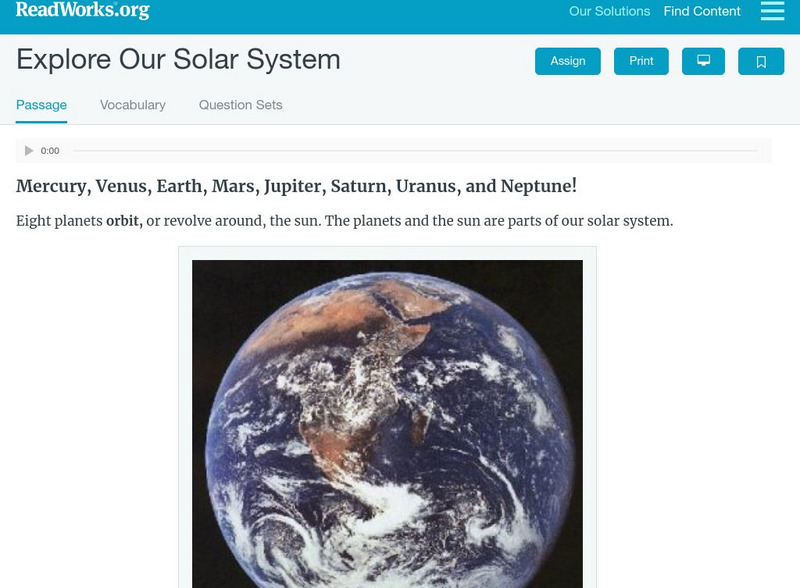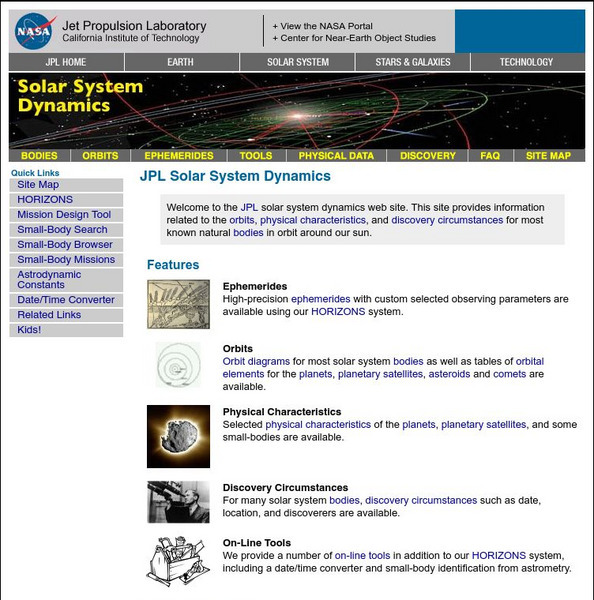Hi, what do you want to do?
Curated OER
and and Ocean Views of Earth by Remote Sensing
Students explain how satellites help scientists to see more than with the unaided eye and how Landsat technology works. Students identify vegetation and fire sites in the rainforest and detect erosion along rivers. They are able to use...
Curated OER
Exploration of the Moon
In this moon worksheet, students review the different spacecraft missions that went to the moon and the information learned about the moon from these travels. This worksheet has 11 fill in the blank and 2 short answer questions.
Curated OER
Uranus
In this planet science instructional activity, students learn 6 facts about the planet Uranus. Students also read a paragraph containing more information about the planet.
Curated OER
The Reason for the Seasons; Science, Geography
Students think about what causes the seasons to change, reflect on what they know about seasons and how their lives affected by seasonal changes.
Curated OER
Dangers of Radiation Exposure
Students explore sources of high-energy radiation and calculate student exposure to ionizing radiation over the past year.
Curated OER
Last Year on Pluto
Students examine the astronomical concept of a year. They relate the passage of time on planets to historical events in the USA.
Curated OER
Focus on Saturn's Fascinating Features
Students identify and discuss the characteristics of Saturn. They create a book using those characteristics. They also develop diagram to show Saturn and its moons.
NASA
Nasa: The Solar and Heliospheric Observatory (Soho)
NASA provides a detailed overview of the Solar and Heliospheric Observatory (SOHO), currently orbiting the sun and gathering information on the sun's structure, composition and dynamics. Site includes images, movies, data, solar lessons,...
Georgia State University
Georgia State University: Hyper Physics: Solar Orbit
A table listing the average radius of orbit for the nine planets about the sun; expressed in astronomical units. Data can be used to calculate the orbital speed or the orbital period.
PBS
Pbs Learning Media: Solar System Scale Model
Teach the concept of scale models and the size of the solar system through this extensive lesson plan. Students will learn about scale models, estimate which objects to use to create a scale model of Earth and Sun, and figure out how far...
PBS
Pbs Learning Media: Solar System Fact Sheet
Use this handy chart to help acquaint yourself with major facts about the solar system. This chart is broken down by planet and displays data such as the size of the planet, distance from the sun, rotation period, orbital period,...
PBS
Pbs Learning Media: Scaled Images of the Solar System
Use the following lithographs to envision the scale of our solar system. View different models of planets at different scales, an infographic about the relative sizes of the planets and distance from the sun, and images of the largest...
Massachusetts Institute of Technology
Mit: Open Course Ware: Earth, Atmospheric and Planetary Sciences: Solar System
A university-level course that looks at the structure of the solar system, the sun, the planets, and other bodies in space. Includes course readings, assignments, and study notes.
TeachEngineering
Teach Engineering: Solar System!
An introduction to our solar system: the planets, our Sun and our Moon. Students begin by learning the history and engineering of space travel. They make simple rockets to acquire a basic understanding Newton's third law of motion. They...
CK-12 Foundation
Ck 12: Earth Science: Planet Orbits in the Solar System Study Guide
Review planets orbiting in the solar system using this study guide.
CK-12 Foundation
Ck 12: Earth Science: Planet Orbits in the Solar System
[Free Registration/Login may be required to access all resource tools.] Looks at the size and shape of planet orbits.
CK-12 Foundation
Ck 12: Earth Science: Planets of the Solar System
[Free Registration/Login may be required to access all resource tools.] Examines the eight planets of our solar system, their orbits, and rotation.
CK-12 Foundation
Ck 12: Earth Science: Planets of the Solar System
[Free Registration/Login may be required to access all resource tools.] Examines the eight planets of our solar system and their orbits and rotation.
Scholastic
Scholastic: Study Jams! Science: Our Solar System: A Day on Earth
A video and a short multiple-choice quiz on how the Earth's tilt on its axis, its rotation, and its orbit around the Sun give us a 24-hour day, a 365-day year, and our seasons.
Cool Math
Coolmath: Science Monster: Introduction to Our Solar System
Find out about all the planets and other solar system characteristics in this colorful, illustrated tutorial on our neighborhood in space.
Read Works
Read Works: Explore Our Solar System
[Free Registration/Login Required] This informational text passage shares facts about planets in the solar system. This passage is a stand-alone curricular piece that reinforces essential reading skills and strategies and establishes...
NASA
Nasa: Solar System Dynamics
This resource provides information related to all known bodies in orbit around the sun. Content includes planetary orbits, JPL's Horizon System, natural satellite information, and more.
Physics Aviary
Physics Aviary: Practice Problems: Orbital Motion of a Satellite
Students must calculate the period of a satellite moving around one of the bodies in our solar system.













